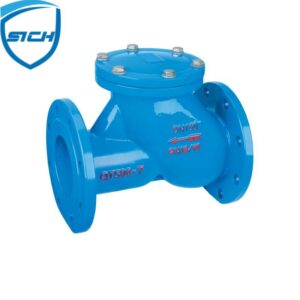The following aspects should be considered when evaluating the performance of a china check valve:
Cracking pressure
This is the minimum pressure required to open the valve and initiate flow in the forward direction. A lower cracking pressure results in easier flow initiation and a more sensitive valve response.
Flow rate
The flow rate of a check valve is the volume of fluid passing through it per unit of time. It’s essential to select a check valve with an appropriate flow rate capacity for your system to avoid restrictions or pressure drops.
Leakage
A well-performing check valve should have minimal leakage when closed. Leakage can be caused by wear, debris, or damage to the valve’s sealing mechanism. Regular maintenance and inspection are essential to ensure proper sealing.
Response time
The response time of a check valve is the time it takes for the valve to fully open or close in response to changes in flow direction or pressure. Faster response times are desirable to prevent backflow and protect the system from damage.

Material compatibility
The materials used to construct the check valve should be compatible with the fluid it will come into contact with. Incompatible materials can lead to corrosion, degradation, or failure of the valve.
Operating conditions
The performance of a check valve can be affected by factors such as temperature, pressure, and fluid characteristics. Ensure that the valve is rated for the specific operating conditions of your system.
Installation
Proper installation is critical for optimal check valve performance. Ensure that the valve is installed in the correct orientation and securely fastened to prevent misalignment, leaks, or other issues.
Maintenance and inspection
Regular maintenance and inspection of check valves are essential to ensure their continued performance and longevity. This includes checking for wear, debris, and proper sealing.